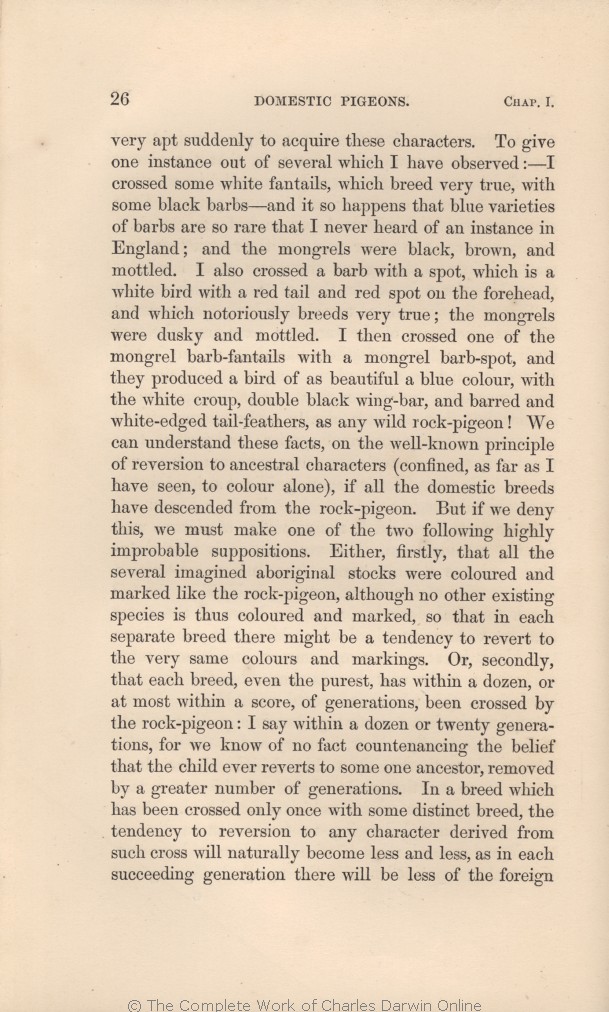apt suddenly to acquire these
characters. | characters. 1861 1866 1869 1872 | | characters; 1859 1860 |
| To give one instance out of several which I have observed: — 1861 1866 1869 1872 |
| for instance, 1859 1860 |
| ..... 1860 1861 1866 1872 | | some 1859 1869 |
| 1 blocks not present in 1861 1866 1869 1872; present in 1859 1860 | | uniformly
white fantails with some uniformly black barbs, and they produced mottled brown and black birds; these I again crossed together, and one grandchild of the pure white fantail and pure black barb was of as beautiful a blue colour, with the white rump, double black wing-bar, and barred and white-edged tail-feathers, as any wild rock-pigeon!
|
| some white 1861 1866 1872 | | white 1869 |
| croup, 1861 1866 | | loins, 1869 1872 |
| characters 1861 | | characters, 1859 1860 1866 1869 1872 |
| (confined, as far as I have seen, to colour alone), if 1861 |
| if 1859 1860 1866 1869 1872 |
| have 1859 1860 1861 1866 | | are 1869 1872 |
| firstly, 1859 1860 1861 1866 | | first, 1869 1872 |
| dozen, 1861 1866 1869 1872 | | dozen 1859 1860 |
| or 1861 1866 1869 1872 | | or, 1859 1860 |
| most 1861 1866 1869 1872 | | most, 1859 1860 |
| score, 1861 1866 1869 1872 | | score 1859 1860 |
| rock-pigeon: 1859 1860 1861 1866 1869 | | rock-pigeon; 1872 |
| we 1859 1860 1861 1866 |
| no instance is 1869 1872 |
| know 1859 1860 1861 1866 | | known 1869 1872 |
| no fact countenancing the belief that the child ever reverts to some one ancestor, 1859 1860 1861 1866 |
| crossed descendants reverting to an ancestor of foreign blood, 1869 1872 |
| once 1859 1860 1861 1866 | | once, 1869 1872 |
| with some distinct breed, 1859 1860 1861 1866 |
| OMIT 1869 1872 |
| reversion 1859 1860 1861 1866 | | revert 1869 1872 |
| cross 1859 1860 1861 1866 | | a cross 1869 1872 |
|









